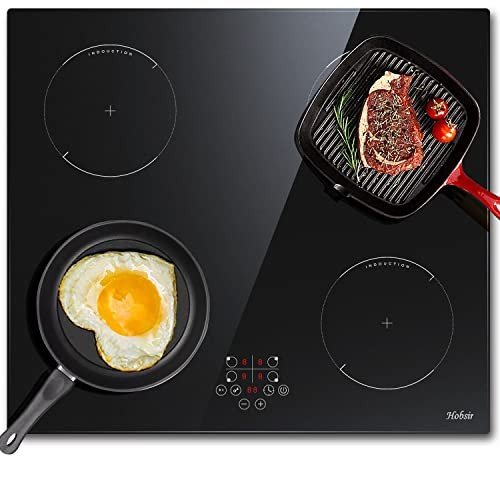Understanding Hobs and Ovens: The Essential Kitchen Appliances
In the realm of kitchen devices, few products are as vital as hobs and ovens. These devices form the backbone of culinary activities, enabling individuals to develop everything from easy meals to elaborate feasts. Understanding the differences, types, and functionalities of hobs and ovens can considerably improve one's cooking experience. This article digs into the intricacies of hobs and ovens, supplying insights that accommodate both amateur and experienced cooks.
What Is a Hob?
A hob, frequently described as a cooktop or stove top, is the flat surface on which pots and pans are placed for cooking. Ovens & Hobs are geared up with heating aspects that produce the required heat for cooking food. They come in different types, consisting of gas, electric, induction, and ceramic options. Each type provides special benefits and drawbacks.
Types of Hobs
Gas Hobs:
- Heat Source: Natural gas or propane.
- Advantages: Instant heat control and responsiveness, preferred by many chefs for precise cooking.
- Drawbacks: Requires a gas connection and can be less energy-efficient.
Electric Hobs:
- Heat Source: Electric coils or smooth glass-ceramic surface areas.
- Benefits: Generally simpler to clean, even heating, and commonly readily available.
- Disadvantages: Slower to warm up and cool down compared to gas.
Induction Hobs:
- Heat Source: Electromagnetic currents.
- Benefits: Quick heating, energy-efficient, and just warms the pots and pans, not the surrounding surface.
- Disadvantages: Requires compatible pots and pans (ferrous materials).
Ceramic Hobs:
- Heat Source: Electric and has a smooth glass surface.
- Benefits: Sleek look, easy to tidy, and even heating.
- Drawbacks: Can take longer to warm up and cool off.
What Is an Oven?
An oven is an enclosed home appliance that cooks food by surrounding it with dry heat. Ovens can be standalone systems or combined with hobs in a single device known as a variety. Ovens are versatile tools that can be utilized for baking, roasting, broiling, and more.
Kinds of Ovens
Standard Ovens:
- Heat Source: Electric or gas.
- Benefits: Good for standard baking and roasting.
- Drawbacks: Can have uneven heat circulation.
Convection Ovens:
- Heat Source: Electric or gas with a fan for circulating air.
- Advantages: More even cooking and quicker cooking times due to air flow.
- Drawbacks: Can be pricier and may require adjustments in cooking times.
Microwave Ovens:
- Heat Source: Microwaves.
- Advantages: Quick cooking and reheating; terrific for thawing.
- Downsides: Can not brown or crisp food well.
Steam Ovens:
- Heat Source: Steam generation.
- Advantages: Retains nutrients and wetness in food, healthier cooking alternative.
- Drawbacks: Longer cooking times and normally higher cost.
Key Differences Between Hobs and Ovens
While hobs and ovens serve the primary function of cooking food, their functionalities and uses differ substantially. The following table summarizes these key distinctions:
| Feature | Hob | Oven |
|---|---|---|
| Cooking Method | Direct heat | Confined heat |
| Primary Use | Boiling, sautéing, frying | Baking, roasting |
| Heat Source | Gas, electric, induction | Gas, electric, steam |
| Cooking Area | Flat surface | Enclosed space |
| Cooking Time | Generally much faster | Differs based upon meal |
| Control & & Precision | Immediate and direct | Depend on settings and timers |
Benefits of Using Hobs and Ovens Together
Combining making use of a hob and an oven can considerably boost the cooking process. Here are some benefits:
- Versatility: Different types of food can be prepared at the same time.
- Effectiveness: Using both enables different cooking methods, such as searing on the hob and baking in the oven.
- Time-Saving: Multi-tasking can substantially minimize overall cooking time.
Upkeep and Care
To make sure the longevity of hobs and ovens, regular upkeep is essential. Here are some suggestions:
For Hobs:
- Clean spills immediately to prevent staining.
- Usage proper cleaners for particular materials (e.g., ceramic cleaner for glass-ceramic hobs).
- Routinely examine gas connections for leaks (for gas hobs).
For Ovens:
- Wipe down the interior after each use to prevent build-up.
- Usage self-cleaning features if offered, or use oven cleaners for difficult spots.
- Frequently examine seals and gaskets for wear and tear (to maintain heat performance).
Frequently asked questions About Hobs and Ovens
1. What is the best type of hob for a newbie cook?
Answer: A ceramic or electric hob is often recommended for novices due to reduce of usage and cleaning.
2. Can I utilize any cookware on an induction hob?
Answer: No, induction hobs require pots and pans made from magnetic materials (e.g., cast iron or stainless-steel).
3. How often should I clean my oven?
Answer: It is recommended to clean your oven every couple of months, or more regularly if you use it frequently.
4. Is it much better to bake in a convection oven?
Answer: Yes, convection ovens are often much better for baking as they provide even heat distribution. However, some delicate recipes might benefit from standard ovens.
Comprehending the performance and distinctions between hobs and ovens is essential for any cooking lover. Whether one prefers the instantaneous heat of a gas hob or the precision of an induction cooktop, each type offers distinct benefits. Similarly, ovens differ widely in function, from traditional baking to steam cooking. By appreciating these devices' functions in food preparation, cooks can enhance their cooking abilities and simplify their kitchen activities.

